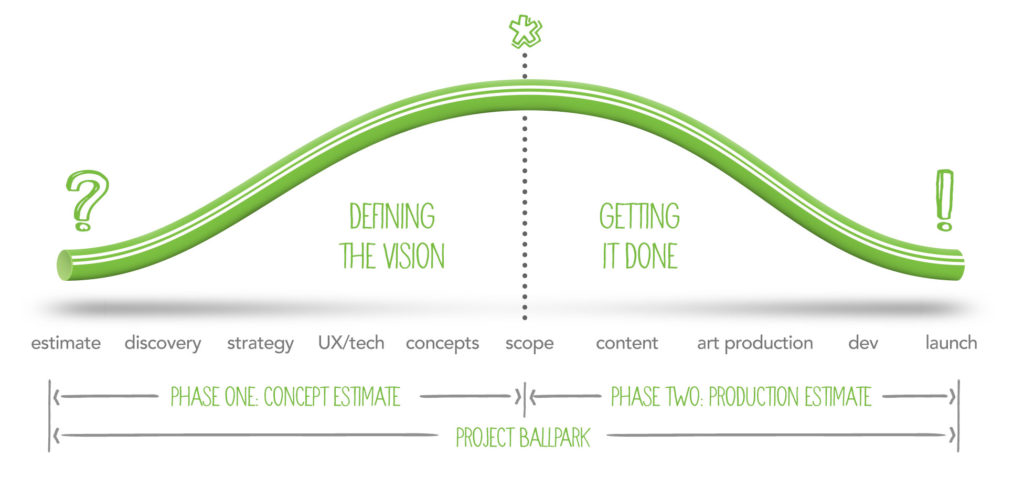A concept I’ve seen more and more lately is the Hill diagram. I’m not sure if it’s because it’s trending or when you become hyper aware of something you see it more or it’s just pure coincidence but Spitball uses this concept in a newer process of writing complex estimates. In the past, we have used the analogy of designing and building a house – where you can’t estimate the construction of a house without knowing the design details first. The Hill approach is similar where we introduce a two-phased process to refining estimates.

The idea is that you can only scope as far as you can see. You don’t know what’s on the other side of the hill until you are at the top of the hill. The steps uphill help define and understand the entire project which take their own set of time. When you are the top, the scope should be nearly defined. The process of going downhill is all of the things needed to complete the project.
So when clients say “I want a website, how much does it cost?” the answer is largely unknown because we’re at the bottom of the hill looking up. Same with a commercial tv spot, or experiential marketing, and many other business needs. The amount that is unknown in these types of projects creates challenges to provide a truly accurate estimate. We however understand the need for clients to secure budgets and approve a project to move forward. One solution would be for clients to simply provide a project budget which would make it easier, but that’s a separate topic for a separate blog post.
As an agency, how do we protect ourselves from the unknowns of a complex project while minimizing cost surprises for the client? It takes collaborative client/agency empathy throughout the project, all starting with the initial project brief and we believe a Hill approach.

If we look at the above high level process for a sample web project, the cost of launching a website could vary greatly. Some of the factors include:
- How deep is the subject matter, to not only understand but to also articulate through content?
- What is the creative concept and production needed?
- How complex is the functionality?
- What are the technical or compliance requirements?
- And many, many more.
Each of these elements are typically defined going uphill. But a general understanding and managing the client expectations of these important factors need to be set during the initial project brief so the estimate can be relatively close to the final cost. It takes understanding by both sides throughout the process to stick to an early agreement on scope as well as an understanding that deviation of that scope and natural constant definition of production could incur a change in cost in the back-half, downhill production estimate.

The Hill approach protects the agency from potential scope creep and promising a cost on an unknown scope, but also allows both agency and client to assess true costs, up or down, after key decisions are made getting to the top of the hill. The Hill approach is another example of how Spitball values collaboration in every aspect of a project and ultimately improves the experience for both the agency and client.




